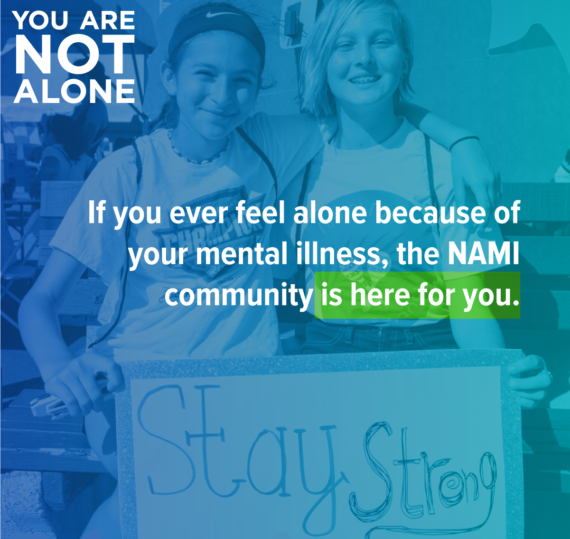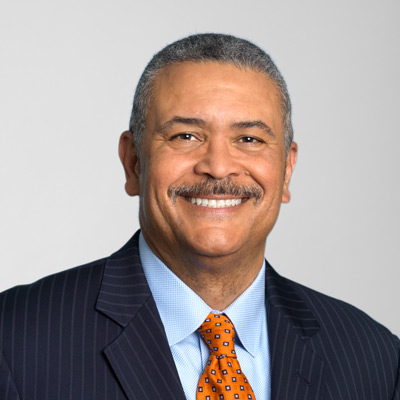
(12-21-20) I asked Luna Greenstein, who works at NAMI national as a senior manager, to tell me how the nation’s largest, grassroots mental health advocacy organization responded to the challenges of 2020.
The Growth of NAMI’s Mission in 2020
By Luna Greenstein
This year has been filled with adversity on many levels, but it is in times of adversity that we are forced to grow, to evolve. It is also in times of adversity that we tend to bond with our fellow humans who are facing the same challenges.
The National Alliance on Mental Illness (NAMI)’s evolution during 2020 is a perfect example of this.
We started this year like any of our last 40 years — focused on our mission to better the lives of Americans with mental illness and their families. We were updating our programs to keep with the times, bringing people into our community through our awareness campaigns, and bringing our State Organizations and Affiliates throughout the country together to ensure we held a united front.

NAMI CEO Daniel Gillison Jr.
We also had a new CEO start in January, Dan H. Gillison Jr., the first Black American to lead the organization since its founding in 1979. As it turns out, he was exactly the right person at the right time.
When the pandemic hit in March, our mission expanded to face the challenge ahead. While we were still focused on our grassroots mission, we found ourselves with an increased need to help all Americans, not just those with mental illness, cope with this crisis that was now impacting everyone’s mental health.
A Huge Undertaking : Becoming “everything to everyone.”
As you can imagine, this was a huge undertaking.
But no one was better suited to do this than NAMI. We are truly the only mental health organization that wants to “be everything to everyone.” While this isn’t always possible, we certainly try.
We are an Alliance made up of thousands of people who, simply put, care about other people and their mental health and want to help them have access to the resources, tools and care people need to cope with the challenges of mental health issues. Lastly, we are a group of people who are extremely familiar with discomfort — all of us have a reason why we are so dedicated to this mission — and, to put it mildly, this pandemic has been uncomfortable for everyone.
How did we change?
One of our goals at NAMI is to “meet people where they are.” Well, now they were all at home. NAMI had to find ways to be there with everyone, too. The Alliance banded together to help our Affiliates and State Organizations transition their education classes and peer support groups to an online format.
The NAMI HelpLine switched to being remote for the first time in our history, and we increased our capacity significantly to handle the huge influx of calls from the new wave of Americans experiencing mental health issues for the first time.
Offering Advice Through The Media
Our Chief Medical Officer, Dr. Ken Duckworth, interviewed with many major media organizations — from the Chris Cuomo Prime Time Show to the BBC World News — to provide helpful medical advice and information that soothed so many. While we were being told to “socially distance,” he and others at NAMI advocated for a more accurate term, “physically distance,” because we all need to stay socially connected.
To further provide a sense of hope, we created the COVID-19 Resource and Information Guide based on the top questions asked to our NAMI HelpLine. The guide, also translated into Spanish, offered resources from COVID-19-specific public health guidelines to online support groups, tips on maintaining medication regimens while in quarantine, and how to care for loved ones in the criminal justice system during these uncertain times.
This was all in just the first few weeks after the pandemic started. Little did we know then what else 2020 had in store for us all: the killing of George Floyd in May.
Addressing George Floyd’s Death
The public outcry for justice for Floyd spread into a modern Civil Rights Movement in city streets throughout the country. NAMI needed to be a part of this movement. Why? What does NAMI have to do with civil rights and racism? To put it plainly, discrimination and racism negatively impacts peoples’ mental health. Again, we felt the pull to help and support, we needed to be there for people, in any way that we could.
How did we support communities of color during this time?
It became increasingly clear how important it was for us to support communities of color while they were facing this immense infringement on their lives and rights.
The struggles of Black Americans are somewhat similar to those with severe mental illness: People of color are overrepresented in the criminal justice population. So are people with mental illness. People of color are overrepresented in the unemployed, impoverished and homeless populations. So are people with mental illness. People of color face constant discrimination for things that are out of their control. So, too, do people with mental illness.
And the struggles are not only similar, they also overlap. The group that is one of the most disenfranchised, underserved and vulnerable are people of color with mental illness.
And this is an area where NAMI wanted to focus.
Utilizing 988 As A Mental Health Number
One of the major initiatives we have been working on for a while is advocating for a mental health crisis number. When someone is experiencing a mental health crisis, it seems obvious that they should receive a mental health response from a trained mental health worker/first responder who can connect them to treatment. However, this is not what happens most of the time. These individuals, instead, receive a criminal justice response that can lead to tragic, harmful results.
2020, despite its many challenges and setbacks, was a historic year because a new law was passed that will implement 988 as a 3-digit mental health crisis number by 2022. This is a major victory, not only because people won’t have to involve law enforcement in their mental health crises and risk criminal justice involvement, but also because this means that local governments will have to implement a mental health system on the community level to be able to respond to these calls. NAMI also developed a report, “Divert to What?” to guide communities in developing their own local mental health systems. This is a game changer for people of color with mental illness who make up far too much of the prison population.
While 988 was the “big deal” of the year, we also created information and resources to support this community in other ways. We developed rich new content, from new videos to webinars to web pages, addressing the intersection between culture/identity and mental health, advocating for increased access to culturally competent care, identifying the current barriers that exist to mental health care and where people can turn to for help.
We know we are just scratching the surface in terms of the need for support and the challenges we will still face in 2021, but the body of work NAMI accomplished this year demonstrated tremendous care and a commitment to continuing our efforts in this area. This work is a testament to what we can achieve when we band together as the mental health community, which truly includes all of us: from those who are experiencing mental health issues for the first time to those who are the most underserved parts of our population.
My biggest take away from 2020 is this: no matter who you are, what your background is, what your mental health condition is, or whether you’re experiencing symptoms for the first time or 13th time, NAMI will be there for you. We want you to be a part of our community, the NAMI community.
About the Author: Luna Greenstein is the Senior Content Manager at NAMI and has worked for the organization for over five years. She is a creative and mission-driven writer, editor and content manager as well as a passionate mental health advocate. Luna uses the power of storytelling to raise awareness about mental illness and advocate for positive change. Check out her work on the NAMI Blog.

Luna Greenstein



